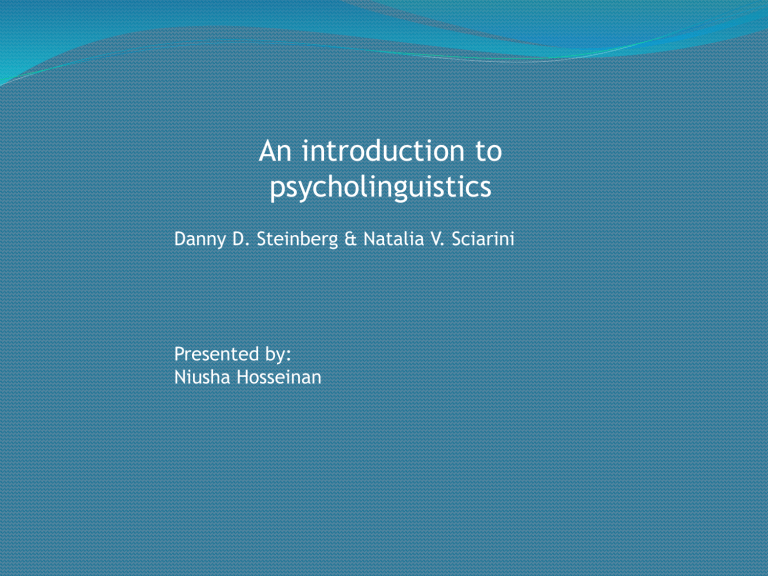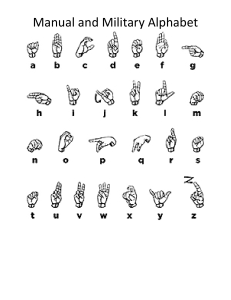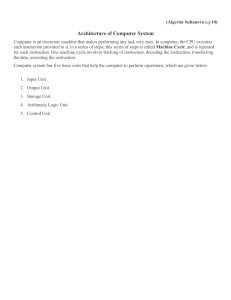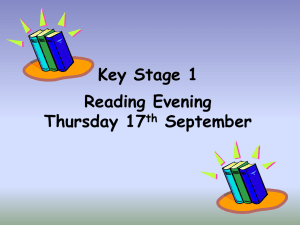
An introduction to psycholinguistics Danny D. Steinberg & Natalia V. Sciarini Presented by: Niusha Hosseinan Chapter 3 Reading principles and teaching •Focus of this chapter is on nature and teaching of reading Principles of reading 1. Writing system and speech 2. The whole-word vs. phonics/decoding controversy 3. A universal four-phase reading program Writing system and speech 1.1 writing system based on speech sound -Writing is to present spoken word of language Writing is based on sound meaning orthography Writing system and speech a) Phoneme or syllables: each symbol represent a sound or phoneme or syllable. There are many script or alphabet to represent the sounds. e.g. Cyrillic alphabet in Russia and etc. most of these sounds are related to their orthography forms. b) The unpredictable of English orthography: the English is not consistent. _ why English orthography poorly represents English phonemes? Because the base of English is Latin and there are fewer phonemes. So English had to make adaptation in order to suits its language. The adaptation of English: 1) A letter could be assign more than one sound. More on vowels. 2) The failure of English spelling to reflect the changes that the spoken language has undergone. Writing system and speech The origin of English alphabet: The origin of Roman alphabet lie with the Semitic peoples in the middle east thousands of years ago. The Phoenicians adapted it to their needs and then carried that alphabet to Greek, from where it travelled to Rome. Both the Greek and then the Romans made adaptation to suit their languages. For example letter A went from the Semitic name aleph, to the Greek alpha, to the Roman ah and the English a. Writing system and speech c) Meaning (morpheme): Chinese and Japanese have the system which the symbols represents the morphemes. For example, kowtow is a Japanese word. It mean kneel and touch the ground with one’s forehead. The whole-word vs. phonics/decoding controversy Long-standing pervades reading theory and teaching methods concern what The focus of learning should be. Whole-word: advocate that focus be on meaning Phonic/decoding: advocate that focus must be on speech and phoneme Both goal is children’s reading fluently Phonic/decoding approach Nature of reading according to phonic/decoding: Reading convert written word form of language to speech form. And reading is the ability to decode reading materials into speech. They believe that there is a meaning after speech. they want children first learn the sound and letter combination, then they would be able to read by decoding words. It means that children must be able to decode written form into the phonemic form. Supporting research evidence for phonic/decoding is sparse. Most of the researchers know phonic better than whole-word. They observe that children’s reading improve, but, Are they able to recognize the meaning? Phonic/decoding approach Problems: 1. Wrongly focuses on sound rather than meaning 2. Decoding is a very difficult process 3. Sounding out a new word relies on meaning Whole-word approach What should be done in teaching whole-word approach: 1. teaching reading should focuses on meaning and communication and not on speech 2. Fluent readers use a whole-word strategy 3. Children learn to segment their native language, morphemically, syntactically, and phonologically, by induction 4. Research evidence in support of learning letter-sound value by induction 5. Learning to discriminate individual letter shapes: best in word 6. Reading should involve only meaningful words, phrases, and sentences 7. Reading should not depending on teaching new language or new concepts 8. Reading should be based on speech understanding and not on speech production 9. Reading should not depend on the teaching of writing 10. Learning to read should be enjoyable A universal four-phase reading programme 1. 2. 3. 4. Word familiarization Word identification Phrase and sentence identification Paragraph, stories, and book reading Then the researchers recognize that a child is ready to read when the child can understand spoken words So early reading is good





